Sustainable Aquaponics - How I Grew 220 Pounds Of Food On 16 Square Feet
I built an aquaponics system in my backyard that produced 100 lbs./45 kg. of fish and 120 lbs./54 kg. of vegetables in a 16 sqft./1.5 meters of space using 95% less water than traditional gardening.
Aquaponics combines hydroponics and pisciculture, or fish culture, into a closed loop system. The waste from the fish goes through a biological process that transforms their waste into nutrients for the plants and the plants filter the water to provide clean water for the fish.
The water continually recycles through the system so it uses only 5% of the water needed compared to traditional gardening.
Aquaponics (/ˈækwəˈpɒnɪks/) refers to any system that combines conventional aquaculture (raising aquatic animals such as snails, fish, crayfish or prawns in tanks) with hydroponics (cultivating plants in water) in a symbiotic environment. In normal aquaculture, excretions from the animals being raised can accumulate in the water, increasing toxicity. In an aquaponic system, water from an aquaculture system is fed to a hydroponic system where the by-products are broken down by nitrifying bacteria initially into nitrites and subsequently into nitrates that are utilized by the plants as nutrients. Then, the water is recirculated back to the aquaculture system. source
Here's a video of the system I set up in my backyard right after installing it. The basil and tomatoes grew to Jurassic sizes and provided food over a 10-month period.
My Backyard Aquaponic System
What I love most about aquaponics is how sustainable it is. It uses very little space, water, electricity, no fertilizers, and grew lots of fresh food right on site. Kids and adults alike loved to come over and look at it fascinated by how it worked.
These kinds of systems can be scaled up easily and can be done on any kind of land, even land that would not grow anything.
Another added benefit is how fast the plants grow, faster than traditional farming methods making it ideal for intensive production. There's little work involved once the system is set up. You just need to feed the fish, check the water occasionally to make sure everything is balanced, clean the water filter, and harvest food.
This video shows a commercial scale aquaponics system and explains in more detail how it works to clean water naturally.
Austin Aquaponics
Aquaponics is starting to make more sense for growing sustainable food with less water even in the off-season and is suitable for growing food in and near cities so the food is transported less reducing the carbon footprint and providing fresher food.
Aquaponics is a highly sustainable method of Agriculture. There are some input and maintenance with Aquaponics system such as cleaning filters and feeding the fish. The primary benefits of Aquaponics are:
- Environmentally responsible for low water usage and low power usage.
- The primary inputs to the system are Fish food and water.
- Little to no Chemical usage. Aquaponics requires no synthetic fertilizers and few pesticides.
- Many of the plants that thrive in Aquaponic growing are very easy to grow.
- Low susceptibility to pests and diseases
- Timely crop turn around
- Increased crop production per square foot versus traditional farming
- Multiple crops and fish can be grown from the same system
- Fish can be harvested as an additional food or revenue source source
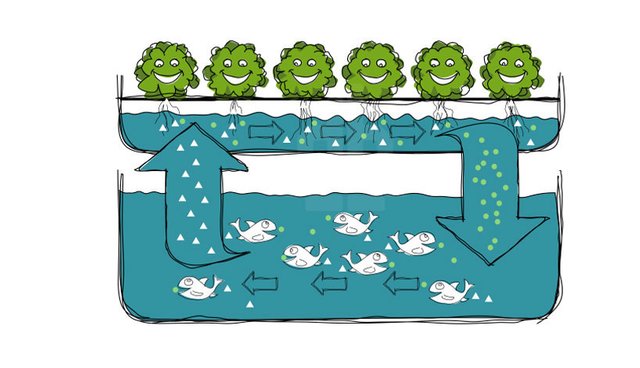
Can Aquaponics Supply Enough Food For A Family?
These are many companies working on design solutions to provide enough food for a family of four with aquaponics. Here are some of the most innovative.
Imagine a swimming pool filled with fish surrounded by a 15' spiral of growing trays filled with plants, a solar panel to pump water to the top of the trays and the replenished, clean water spiraling back down into the pool.
The growing bed tray is approximately 360′ feet long by 3 feet wide, creating a growing area of approx. 1080 square feet. Maximum yield per square foot is approx 7.65 lbs of food annually or 8262 lbs of veggies annually. This does NOT INCLUDE the total yield of fish produced in the tank which is about 1000 fish or 1500 pounds annually.
Cost to build this system is about $5k including tank, materials, pipe, pump, and solar power system.
This will produce nearly 10,000 pounds of food annually, meaning at about $1 per pound national average retail, that’s approximately $9762 in revenue, for a profit of $4762 for the year. Or you could just produce enough food for your entire family for the year. source
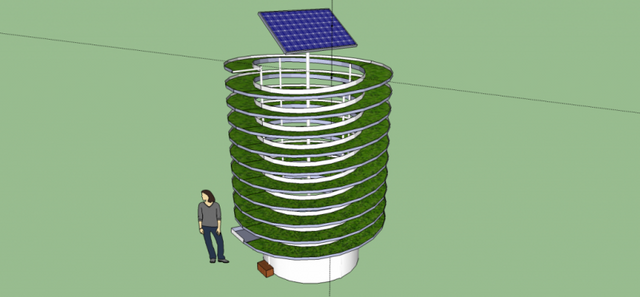
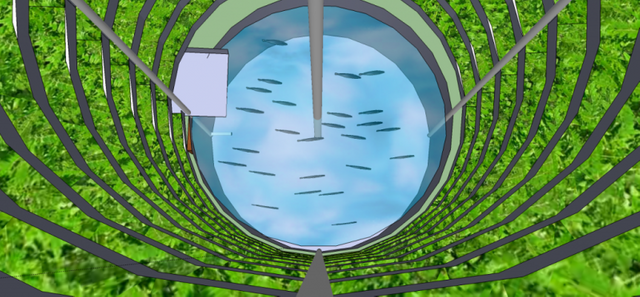
Another interesting project that got its start on KickStarter is the Grow Up project, a portable aquaponic food growing system built with shipping containers that also doubles as a market garden all in one.
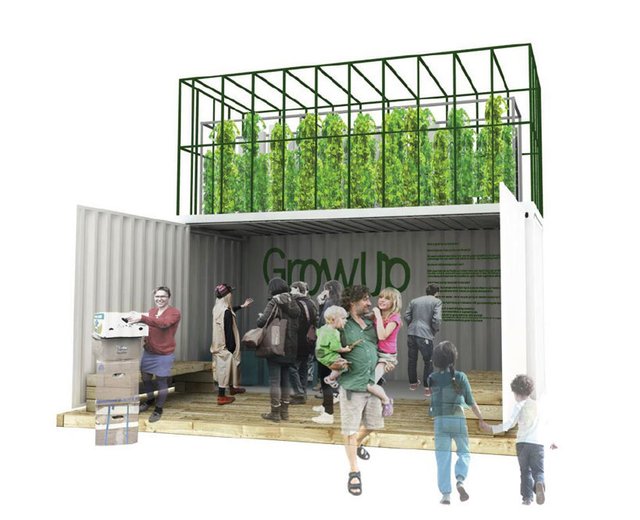
I think aquaponics is here to stay and more innovative designs for innercity grow operation are becoming more popular. If you have heard of any new ideas about aquaponics please share them here.
You can solve all the world's problems in a garden
Related Posts
Chickens are more than a food source, they plant my whole garden, working from sunrise to sunset, weeding, fertilizing, controlling pests and planting, if you know how to manage them. A closer look at properly raising chickens reveals that their usefulness as food just scratches the surface of what they can do for a farmer or gardener and properly managed, chickens can produce more food than just eggs and meat. We'll explore that more in this post but first, let's dig deeper into what 'services' a chicken can provide.
How To Start Worm Composting Kitchen Scraps In Your Home
How To Capture And Utilize Every Drop Of Water On Your Farm Using Keyline Water Design
Master Class On Making Compost
What Is Permaculture? - Permaculture Basics With Geoff Lawton
Quit My Six Figure Job To Grow A Food Forest
My Year Long, Unforgettable Woofing Adventure On Skipley Farm
Luzcypher's Announcement For Steem Witness




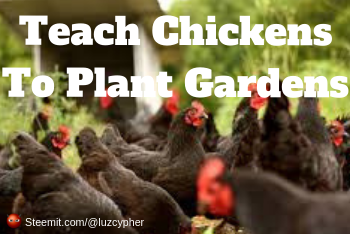
This is some next level gardening man! Fck, it just goes to show that the tools are there for society to feed itself in a sustainable way but commercial farmers don't want to fork out initial investment or something. It boggles my mind why this isn't a standard, especially in hot arid places. I'd heard of aquaponics before but seeing it in action like this really brought home how sustainable it is as a growing method.
Do you use solar power for this Luzcypher?
This system would be perfect for me as a piscitarian (I don't eat meat, only fish, dairy & veg). If I manage to fulfil my dream of moving to the tropics I'm building me one of these bad boys and eating fish stir fry every evening 😉
I used regular electricity but it could be solar powered very easily. The only electricity used is a small pump so one solar panel, battery, and inverter would do the trick. You could even use a dc pump and not need an inverter.
Plus, you don't need to be in the tropics. Tilapia are very hardy fish and as long as the water doesn't freeze it would work. I visited a commercial aquaponics farm in Washington State near Seattle where they kept the fish in a greenhouse and it worked fine. But you do need plants growing at all times for it to work unless you had another filter system for winter. If at any time the plants stop growing the fish would die without a backup filter.
》 Plus, you don't need to be in the tropics. Tilapia are very hardy fish and as long as the water doesn't freeze it would work.
I'm just looking for any excuse to get out if the UK tbh. Interesting what you're telling me though. I do have a greenhouse on a friend's allotment plot but where I live now is a communal garden and there is a lunatic in the downstairs apartment who would mess with it or complain to landlords if I built a system out back. I think I'd definitely need a greenhouse here as winter sees frozen water but I've grown lettuce and other greens like spinach in the greenhouse over winter. Biggest problem with the greenhouse on the allotments is no electricity and also it's not secure. Someone would steal it within 6 months.
Ha ha, again I'm just trying to talk myself into robbing a bank and running away somewhere hot, buying a bit of land to grow some stir fry ingredients 🤣😉
Posted using Partiko Android
I know the feeling. I'm in Vietnam right now and all the farmers are planting their crops everywhere. I'm missing my garden.
You could try something small with an aquarium like this.
Badass man aquaponics is the way to go!
Posted using Partiko iOS
I took this yesterday, I'll pop back in for a more detailed discussion when I've got more time to spend steeming...
Posted using Partiko Android
:)
fishy+culture = aquaponics... It is why I am who I am - at least as a screen name lol!
Hi @luzcypher!
Your post was upvoted by @steem-ua, new Steem dApp, using UserAuthority for algorithmic post curation!
Your UA account score is currently 6.682 which ranks you at #133 across all Steem accounts.
Your rank has not changed in the last three days.
In our last Algorithmic Curation Round, consisting of 205 contributions, your post is ranked at #31.
Evaluation of your UA score:
Feel free to join our @steem-ua Discord server